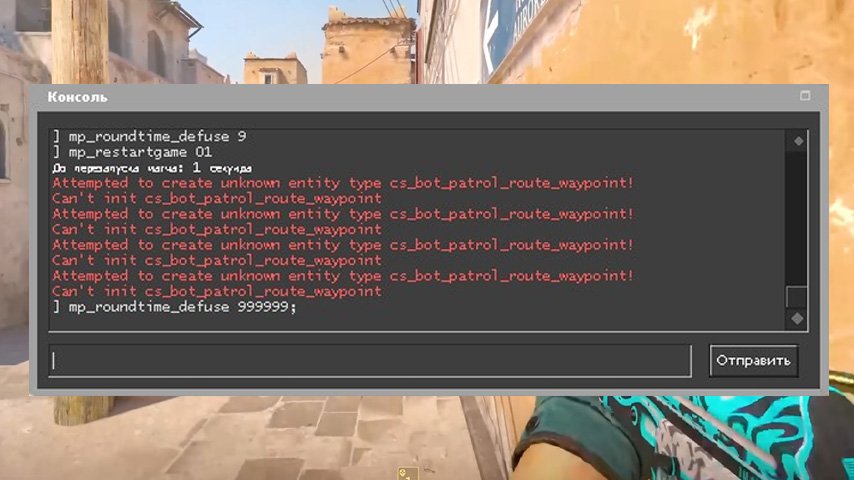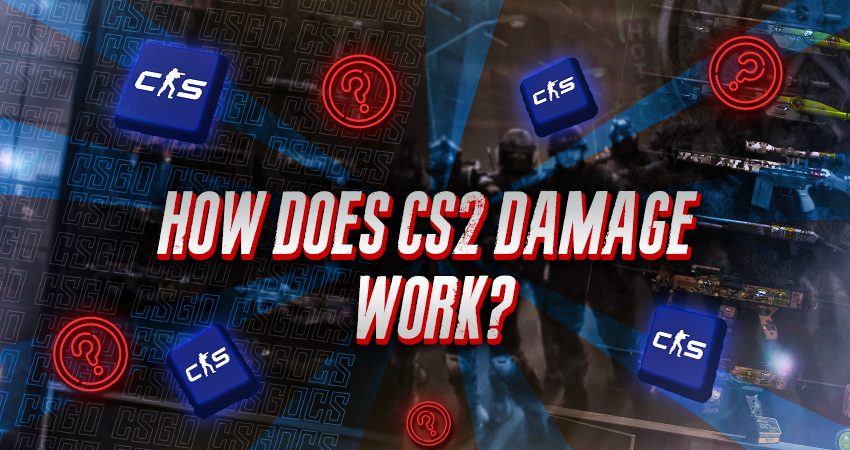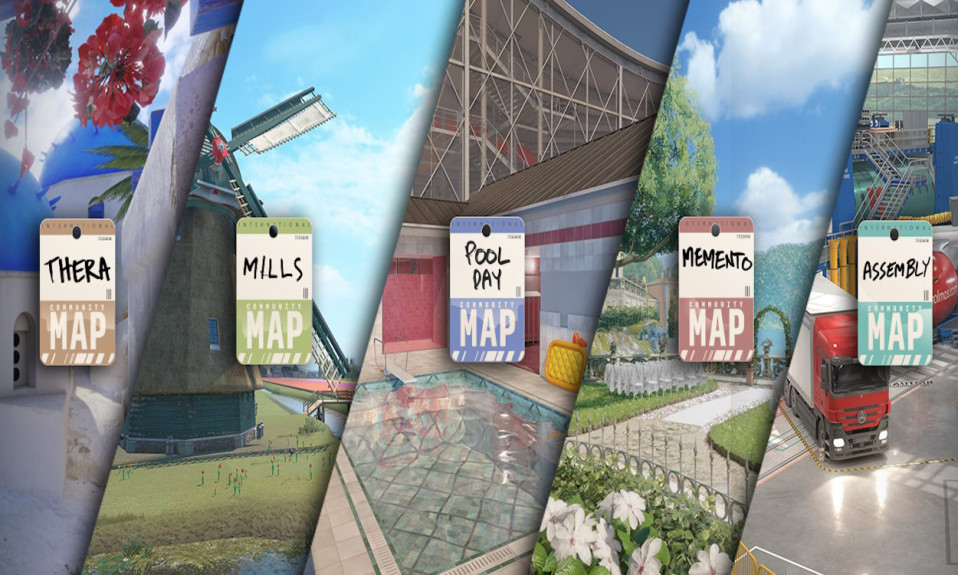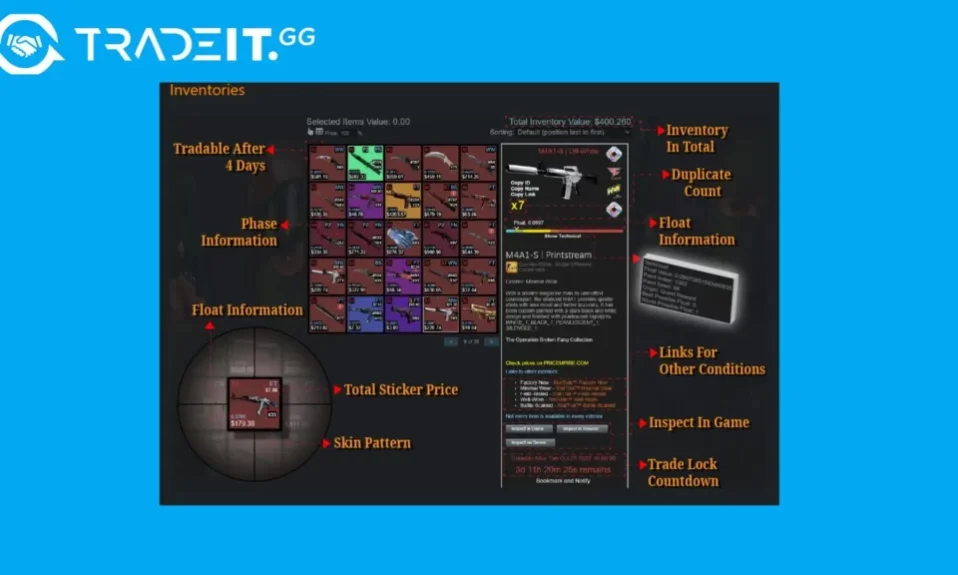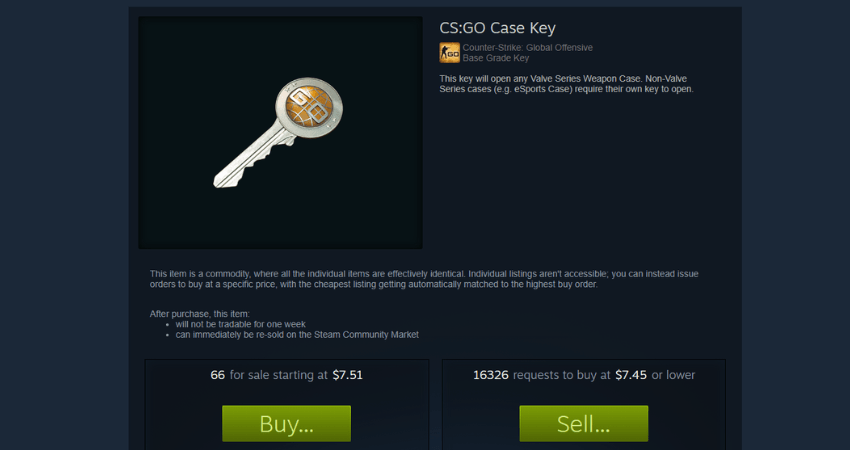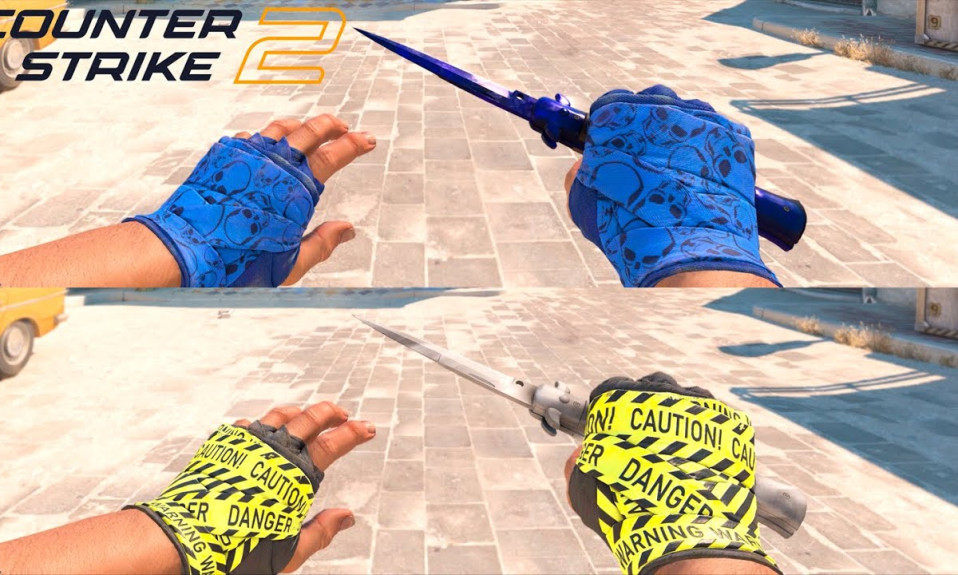Learn about key Overpass Callouts in CS2 to enhance your gameplay. This guide covers essential points for bombsites, mid control, and practical tips to avoid mistakes.
Mastering Overpass Callouts in CS2 is crucial for improving communication and teamwork on this iconic Counter-Strike map. Overpass offers a challenging layout with multiple chokepoints, bombsites, and opportunities for creative strategies. Knowing the precise callouts can give your team a significant edge by improving coordination and reducing confusion during intense gameplay. Whether you’re securing Bombsite A, defending Bombsite B, or controlling the mid area, understanding and practicing these callouts will elevate your performance. In this guide, we’ll break down essential Overpass Callouts in CS2, along with tips for effective communication and common pitfalls to avoid.
Understanding Overpass Map Layout
To master Overpass Callouts in CS2, understanding the map’s layout is essential. Overpass is a two-bombsite map that emphasizes verticality and choke points, making clear communication a key factor for success. Familiarity with site connections, rotations, and commonly-contested areas can give players a significant advantage in gameplay.
Overpass features two main paths, one leading to Bombsite A located on higher ground, and the other to Bombsite B, which is closer to the canal area. These routes intersect around Mid and Connector, making these areas critical for gaining map control.
Here are some basic map layout components:
- T Spawn: Starting point for the Terrorists, containing routes leading toward both bombsites.
- CT Spawn: Counter-Terrorist starting area located near Bombsite A.
- Connector: Central pathway connecting mid to the canal and the bombsites.
- Water: Low terrain leading toward Bombsite B.
- Fountain Area: Major Terrorist side control point leading toward Bombsite A.
Knowing the layout helps you make quick decisions and effectively deliver or respond to Overpass Callouts in CS2 during critical moments. Map knowledge is the foundation for improving strategic play.

Essential Callouts for Bombsite A
Effective communication on Bombsite A is crucial for success in Overpass Callouts in CS2. Knowing the essential callouts can help your team coordinate attacks or defend against enemy advances with greater precision. Below are some important Bombsite A callouts:
- Truck: Refers to the truck parked near the bombsite, which often serves as a defensive position or cover.
- A Site: The main area where the bomb can be planted. It’s a central point to hold or retake.
- Bank: Located next to A Site, this elevated position is frequently used by defenders for long-range engagements.
- Long: A popular route leading toward the site, used for sneaky flanks or long-distance duels.
- Bathrooms: The area just before Long, offering tactical opportunities to fake or commit to Bombsite A.
Mastering these callouts allows your team to strategically plan and execute maneuvers. For example, calling “enemy spotted at Bank” instantly informs teammates of a potential threat on an elevated angle. When practicing Overpass Callouts in CS2, prioritize Bombsite A’s labels, as they are pivotal for effective teamwork.
Key Callouts for Bombsite B
When it comes to mastering Overpass Callouts in CS2, understanding the key callouts for Bombsite B is crucial. This bombsite often features intense action due to its compact nature and multiple entry points. Clear communication among teammates can make all the difference during gameplay.
Some essential callouts for Bombsite B include:
- Monster: Refers to the pipe leading directly to the site, a common entry point for attackers.
- Short: Denotes the pathway connecting water and the site, often used for quick rotations.
- Pillar: The large pillar on B site providing partial cover during plant or defense.
- Barrels: Indicates the barrels near the water area, a common hiding spot for defenders.
- Heaven: The elevated position overlooking B, perfect for snipers or support players.
Using these callouts effectively can help your team coordinate attacks, hold the site, and rotate efficiently. Always aim to be concise and clear during high-pressure moments. Mastering Bombsite B callouts will give you a significant advantage on Overpass in CS2.
Strategic Callouts for Mid Control
Mastering mid control on Overpass in CS2 is crucial for gaining map dominance. Proper communication of mid-area callouts ensures your team reacts swiftly and strategically. Here are essential Overpass callouts in CS2 for mid:
- Party: Refers to the fountain area near T spawn. Controlling Party is vital for early map presence.
- Connector: A highly contested space connecting mid to Bombsite B. Call out “Connector” when enemies are rotating or attempting to take this position.
- Playground: The open area near the T-side entrance to mid. Highlight enemy movement here to prevent surprise pushes.
Ensure these callouts are used consistently to avoid confusion during fast-paced rounds. For example, if you spot enemies in “Connector,” a teammate can rotate or hold a defense angle at water.
Additionally, mid control enables strategic map rotations. By accurately using Overpass callouts in CS2 for this zone, you improve timing for flanks or bombsite takes. Consistency and clarity are key in ensuring your team capitalizes on this tactical advantage. Always prioritize precision when relaying positions in this high-traffic area.
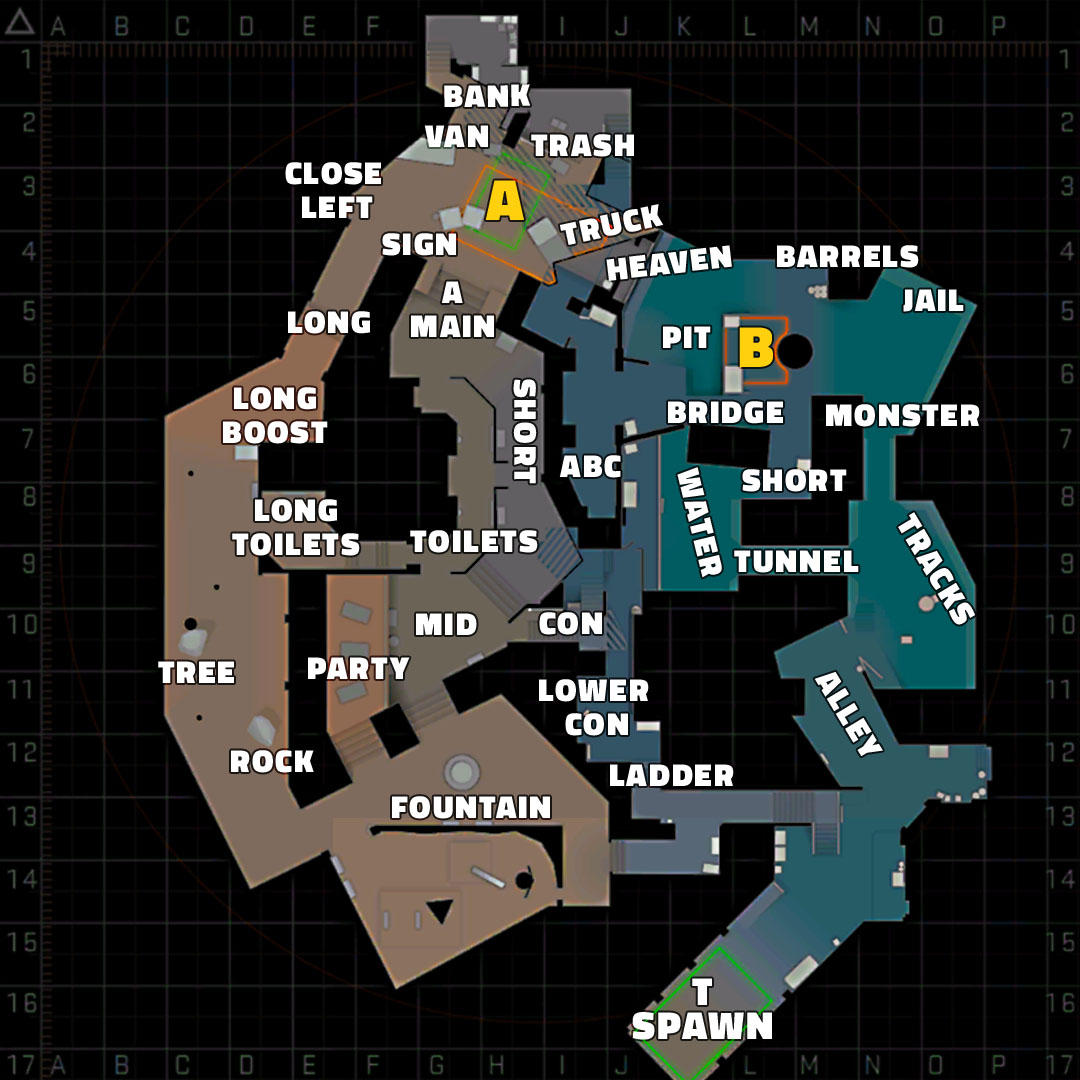
Communicating Enemy Positions Effectively
Accurate and timely communication is crucial when utilizing Overpass Callouts in CS2. Effective communication can significantly enhance your team’s ability to strategize, coordinate, and act quickly under pressure. To make your calls as impactful as possible, keep the following tips in mind:
- Be Specific: Use precise callouts such as “enemy spotted at Long A” or “one pushed Monster” instead of vague terms like “here” or “there.” This helps your teammates adjust their positioning and approach promptly.
- Stay Clear and Concise: Avoid overloading your team with unnecessary details. Keep your messages short yet informative, e.g., “two in Connector” works better than lengthy descriptions.
- Prioritize Important Info: Focus on critical details like the number of enemies, their weapons, and movements. For instance, communicate if someone is holding an AWP at Heaven.
- Use Contextual Clues: Tie enemy information to Overpass Callouts in CS2 to prevent confusion. For example, instead of saying “stairs,” clarify it as “Connector stairs.”
By mastering these communication habits, your team can effectively respond to enemy movements, ultimately gaining a tactical edge in the match.
Common Mistakes to Avoid with Overpass Callouts
When executing effective communication in CS2, avoiding certain pitfalls is crucial to mastering Overpass callouts. Missteps can disrupt your team’s coordination and ultimately jeopardize victory.
Here are common mistakes to watch out for:
- Using incorrect callouts: Mixing up callouts is one of the most frequent errors. For example, calling “Bathrooms” as “Long” can mislead teammates, costing valuable time. Reviewing key Overpass callouts in CS2 regularly can prevent this confusion.
- Overly generic communication: Simply stating “enemy in A” or “they’re pushing mid” lacks precision. This vagueness can make it harder for your teammates to react appropriately. Instead, provide exact locations such as “enemy pushing Short A” or “one connector.”
- Over-communicating: Bombarding your team with unnecessary details during crucial moments can create chaos. Practice concise callouts to relay vital information efficiently.
- Lack of consistency: Using different callouts for the same spot leads to misunderstandings. Stick to standard Overpass callouts in CS2 to ensure everyone is on the same page.
By addressing these missteps, players can elevate their communication skills and improve team performance on Overpass.
Tips for Practicing and Memorizing Callouts
Mastering Overpass Callouts in CS2 requires consistent practice and effective strategies. Here are actionable tips to help you practice and memorize callouts efficiently:
- Start with smaller sections: Focus on one area of the map, such as Bombsite A or Mid. Gradually expand to other sections as you gain confidence.
- Use in-game tools: Utilize training maps or custom servers to practice without the pressure of competitive matches.
- Play with friends: Coordinate with teammates to reinforce the correct callouts during gameplay. Hearing and using the terms repeatedly will help engrain them in your memory.
- Visual association: Link specific callouts to visual landmarks on the map. For example, connect “Toxic” with the barrels near Bombsite B.
- Flashcard method: Create flashcards with a callout on one side and its location on the other. Quiz yourself or have a friend assist.
Commit to regular practice sessions, and don’t hesitate to review Overpass Callouts in CS2, especially if you’re new to the map. Over time, callouts will become second nature, improving your communication and gameplay.

Frequently Asked Questions
What are Overpass callouts in CS2?
Overpass callouts in CS2 refer to specific names or terms used to identify different areas on the Overpass map during gameplay. These callouts enable players to communicate efficiently with their teammates, sharing information like enemy positions, strategies, and movements during matches. Becoming familiar with these callouts is essential for coordinated team play and achieving success in a competitive environment.
Why is it important to learn map callouts in CS2?
Learning map callouts in CS2 is crucial for effective teamwork and communication. By understanding the names of specific map locations, you can quickly share information with teammates, such as enemy activity or planned routes. This knowledge helps improve coordination, minimize confusion, and often determines the outcome of rounds in competitive settings. It also enhances your map awareness and strategic gameplay.
How can I memorize all the callouts on Overpass?
Memorizing all the callouts on Overpass takes practice and regular gameplay. Start by studying an Overpass map with callouts, then focus on learning a few areas at a time. Use the callouts actively during matches, even casual ones, to reinforce the names. Watching professional streams or matches can also help familiarize you with how players use these callouts in real-time. Patience and repetition are key to mastering them.
Are Overpass callouts the same in every version of Counter-Strike?
While many Overpass callouts remain consistent across versions of Counter-Strike, minor changes can occur due to map updates, alterations in gameplay mechanics, or community preferences. With the introduction of CS2, players may encounter slight differences or shifts in popular usage. It’s recommended to stay updated with the latest map versions and coordinate with teammates to ensure everyone is using the same terminology.



